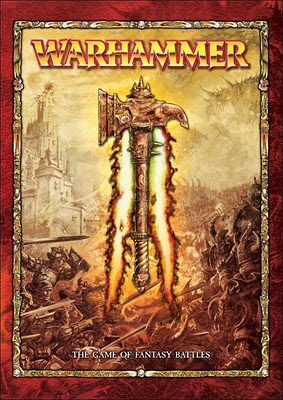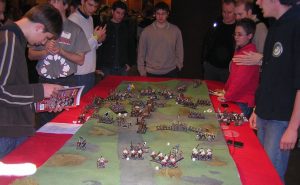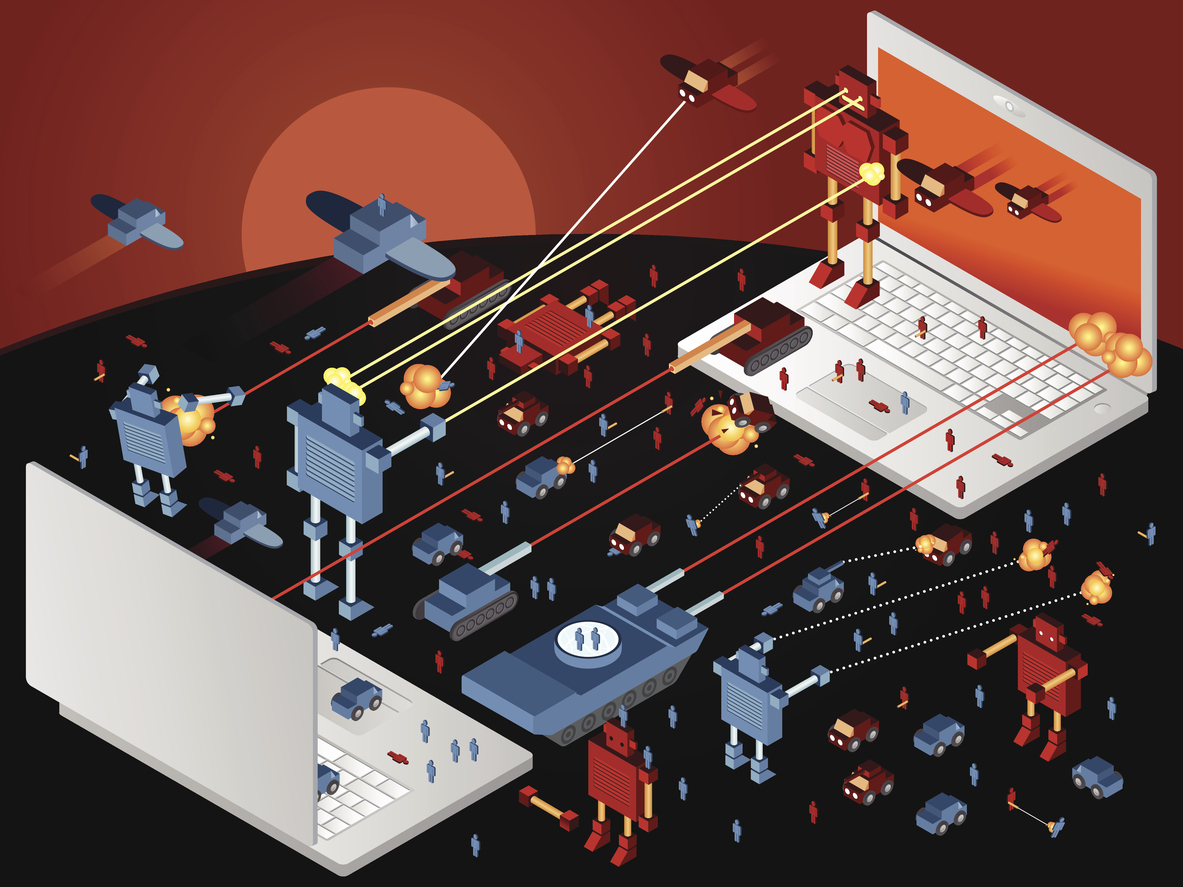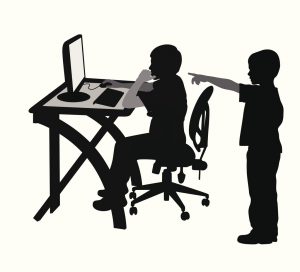Welcome, fellow Warhammer enthusiast! Painting miniatures is, for many of us, just as integral to the Warhammer experience as rolling dice on the battlefield. It’s a chance to bring our armies to life, express creativity, and add a personal touch to the grim darkness of the far future or the fantastical realms of fantasy. Whether you’re just unboxing your first set of miniatures or looking to elevate your skills, this guide aims to walk you through the essential techniques, from preparing your models to applying those final, impressive details.
Preparation and Gear Getting Started Right
Laying the Foundation Priming and Preparation
Before a single drop of colour hits your model, preparation is key. Trust me, skipping this step is a recipe for frustration later. Cleaning the miniature to remove any mold lines (those faint ridges left from the casting process) is a good start. But the most critical first step in painting is priming. Primer creates a uniform surface that paint adheres to properly, preventing chipping and ensuring better coverage. Most painters use spray primers – brands like Citadel, Army Painter, or Vallejo offer excellent options specifically designed for miniatures. Apply the primer in a well-ventilated area (outdoors or using a spray booth is ideal), avoiding cold or humid conditions. Warm the can slightly in lukewarm water if it’s cold for better flow. The trick is to use short, sweeping passes from about 15-30cm away, building up thin coats rather than one thick one, which can obscure details.
Choosing your primer colour matters. Black or grey primers are forgiving as they naturally create shadows in recesses if you miss a spot. White or light grey primers make bright colours pop more easily but demand more careful basecoating. A popular advanced technique is Zenithal Priming. After a base coat of black primer, you spray a lighter colour like white or grey downwards onto the model, typically from a 45-degree angle above. As detailed in some community discussions like those found on forums like Sweclockers, this simulates how overhead light naturally falls, pre-shading the model and making it easier to see where highlights and shadows should logically go later in the painting process.
Tools and Paints Choosing the Right Gear
Your brushes are your primary connection to the model. While you don’t need the most expensive brushes right away, investing in a few decent quality synthetic brushes in various sizes (e.g., a medium size for basecoating, a smaller one for details, and perhaps a fine tip for extreme details) will make a significant difference compared to cheap craft store brushes. Round brushes are versatile, while fine-tipped ones are essential for precision. Later, you might explore dedicated drybrushes. Taking care of your brushes is vital: clean them thoroughly after each session using brush soap or cleaner, never let paint dry in the bristles, and store them horizontally or bristles-up to maintain their shape.
When it comes to paints, stick to brands formulated for miniatures, such as Citadel, Vallejo, Army Painter, AK Interactive, or Monument Hobbies. These acrylic paints have finer pigments and better flow than general craft paints. It’s often better to buy individual colours you need for a specific project rather than large sets initially. A crucial skill is thinning your paints. Straight from the pot, most miniature paints are too thick and will obscure details. You need to thin them, usually with a little water or an acrylic medium. The goal consistency is often described as ‘like milk’ – the paint should flow smoothly from the brush without being watery or running uncontrollably. It’s always a good idea to test the flow on your palette or a spare piece of plastic sprue first. Remember: multiple thin coats are always better than one thick coat!
To help with thinning and mixing, a wet palette is an invaluable tool. It keeps your paints moist and workable for much longer periods, preventing them from drying out while you’re painting. As highlighted in hobby discussions, this significantly aids thinning to the right consistency and makes mixing colours much easier during a painting session. You can buy ready-made wet palettes or easily make one yourself using a shallow container, a damp sponge or paper towel, and a sheet of parchment paper on top.
Core Painting Techniques Building Color and Depth
Building Color with Basecoats
With your model primed and your paints thinned, it’s time for basecoating. This means applying the main, solid colours to the different areas of your miniature. Apply thin, even coats, allowing each to dry fully before applying the next if needed. Don’t worry about perfect neatness at the edges just yet; the goal here is smooth, solid colour coverage over the primer.
Creating Depth with Layering
Layering is perhaps the most fundamental technique for creating highlights and depth. It involves applying progressively lighter shades of your base colour onto the raised areas of the model, leaving the previous layer visible in the recesses. As explained in resources like the Minipainting Wiki’s guide on Layering, you use thinned paints and build up the colour gradually. Each new layer covers a slightly smaller area than the last, focusing on where light would naturally hit. This technique requires patience but gives you great control over creating smooth transitions and making your miniature look three-dimensional.
Shadows with Washes and Contrast Paints
To easily add shadows and definition, washes (sometimes called ‘shades’) are fantastic. These are very thin, ink-like paints designed to flow into the recesses and panel lines of your model, darkening them and instantly creating depth. Apply the wash over your basecoat, letting it pool naturally in the details. For those looking to paint armies quickly, Contrast paints (from Citadel) or Speedpaints (from Army Painter) offer an alternative approach. Applied over a light primer, these paints are formulated to tint the flat surfaces, flow into recesses for shading, and leave raised areas lighter, achieving a basecoat, shade, and basic highlight effect in one step. They are great for getting models ‘battle-ready’ fast.
Refinement and Realism Advanced Techniques
Defining Shapes with Edge Highlighting and Drybrushing
Once your base colours, layers, and washes are down, you can refine the look further. Edge highlighting involves carefully painting a thin line of a lighter colour along the sharp edges of armour plates, weapon casings, or cloth folds. This technique really makes details pop and defines the model’s form. Drybrushing is excellent for quickly highlighting textured surfaces like fur, chainmail, or rough terrain. Load a flat or older brush with paint, then wipe almost all of it off on a paper towel. Lightly brush the bristles back and forth across the raised details – the remaining paint will catch only on the highest points, creating a textured highlight.
The Art of Blending Layer Blending Wet Blending and Glazing
For truly smooth transitions between colours, especially on larger, flatter areas like cloaks or armour panels, blending techniques are key. The most common method, often tied closely to layering, is Layer Blending. This involves creating intermediate colour mixes between your shadow and highlight colours. As outlined in guides like those found on Tangible Day, you start with your base colour, then apply your highlight colour where you want it brightest. Mix the two colours (e.g., 1:1) to create a mid-tone, and apply thin layers of this mix over the border between the two initial colours, slightly overlapping both. You repeat this, perhaps creating further mixes (e.g., 3:1 and 1:3 ratios), applying progressively smaller, thinner layers to smooth the transition. Wet blending involves applying colours side-by-side while still wet and physically mixing them on the model itself – it’s faster but requires more control. Finally, Glazing uses extremely thinned, transparent layers of paint applied over existing colours or transitions to subtly shift the hue or further smooth out blends, as detailed in resources like How To Paint Miniatures. It’s a time-consuming but powerful technique for achieving professional-looking results.
Special Effects NMM OSL and Weathering
Beyond standard highlighting and shading, there’s a world of special effects. Non-Metallic Metal (NMM) uses careful blending of greys, browns, blues, and white to simulate the look of polished metal without using metallic paints. Object Source Lighting (OSL) involves painting the effect of light casting onto nearby surfaces from a source like a lamp, magical glow, or plasma weapon. Weathering techniques like chipping, rust streaks, mud splatters, and dust effects can add realism and narrative to your models, making them look like they’ve truly seen battle.
The Painting Journey Levels Inspiration and Finishing
Understanding Quality Levels and Time Investment
It’s important to recognise that not every model needs to be painted to the absolute highest standard. There are different levels of quality, often dictated by time and purpose. A basic ‘Battle Ready’ or ‘Tabletop Standard’ might involve primer, basecoats, a wash, and maybe a quick drybrush – achievable in perhaps around 30 minutes per standard infantry model once you’re practiced. A higher ‘Tabletop Plus’ standard might add layering and edge highlights, pushing the time to maybe 60 minutes or so. Display quality, involving advanced blending, glazing, freehand details, and special effects, can easily take 90 minutes, two hours, or significantly more per model. Understanding these levels, often discussed in communities like the svenska40k.se forums discussing painting for others, helps manage expectations for large army projects versus single character pieces.
Finding Inspiration and Enjoying the Process
Painting should be enjoyable! Don’t be afraid to experiment. Inspiration is everywhere – look at official Games Workshop art, check out painting tutorials on YouTube (channels like Goobertown Hobbies offer great tips with a focus on fun), browse community forums, or look at blogs where painters share their work, like the projects sometimes detailed on sites like Emmica’s blog. Visiting local hobby stores, such as Fantasia North in Umeå mentioned in some discussions, can also provide inspiration and expert advice. Remember, every painted model is a step forward. Practice consistently, be patient with yourself, and celebrate your progress.
Protecting Your Work Varnishing
After spending hours on your masterpiece, the final step is crucial: varnishing. Varnish (or sealant) provides a protective layer over your paint job, shielding it from chipping, rubbing off during handling and gameplay, and even UV light damage. Varnishes typically come in spray cans or brush-on liquids and are available in different finishes: Gloss provides the toughest protection but is very shiny; Matt gives a flat, non-reflective finish preferred by most painters for the final look; Satin offers a finish somewhere in between. Often, painters might apply a gloss coat first for maximum protection, followed by a matt coat to dull the shine. As with primers, apply varnish in thin, even coats in good atmospheric conditions and let it cure completely.
Conclusion Your Painting Adventure Awaits
Painting Warhammer miniatures is a rewarding journey of learning and creativity. By starting with solid preparation, mastering core techniques like layering and washing, and gradually exploring more advanced methods like blending and special effects, you can transform plastic figures into impressive works of art. Be patient, practice regularly, don’t be afraid to try new things, and most importantly, have fun bringing your corner of the Warhammer universe to life!


 tillgängliga även online. En succé såg dagens ljus. I en era där allt fler söker sig från traditionella bordsspel till onlinespel på nätet blomstrade Warhammer och blev på många sätt återupplivat.
tillgängliga även online. En succé såg dagens ljus. I en era där allt fler söker sig från traditionella bordsspel till onlinespel på nätet blomstrade Warhammer och blev på många sätt återupplivat.

 essa bygger man själv ihop samt målar och små detaljer är väldigt vanligt. Det finns en hel industri bakom detta spel och många gånger är det just målandet och formgivandet som många utövare anser vara den mest underhållande delen av spelet.
essa bygger man själv ihop samt målar och små detaljer är väldigt vanligt. Det finns en hel industri bakom detta spel och många gånger är det just målandet och formgivandet som många utövare anser vara den mest underhållande delen av spelet.  s flera olika varianter av spelet så som Warhammer Fantasy Battle, Warhammer 40 000 och Warhammer Age of Sigmar. Warhammer-världen har influenser både från den reella världen (Jordens geografi, kulturer med mera) och från flertalet fantasy-världar som inte existerar i verkligheten. Från fantasy-världarna har skaparna av spelet hämtat utomjordningar, alver, vättar och mycket mer. I spelet skapar spelarna olika arméer och väljer hjältar med varierande meriter och
s flera olika varianter av spelet så som Warhammer Fantasy Battle, Warhammer 40 000 och Warhammer Age of Sigmar. Warhammer-världen har influenser både från den reella världen (Jordens geografi, kulturer med mera) och från flertalet fantasy-världar som inte existerar i verkligheten. Från fantasy-världarna har skaparna av spelet hämtat utomjordningar, alver, vättar och mycket mer. I spelet skapar spelarna olika arméer och väljer hjältar med varierande meriter och
 g fram och agerar genom att slå en tärning. Man brukar räkna med att ett spel innehåller ca 11 rundor totalt och att varje enskild runda kan ta mycket lång tid. Ibland händer det till och med att spelarna slutar spela för natten och fortsätter igen nästa dag!
g fram och agerar genom att slå en tärning. Man brukar räkna med att ett spel innehåller ca 11 rundor totalt och att varje enskild runda kan ta mycket lång tid. Ibland händer det till och med att spelarna slutar spela för natten och fortsätter igen nästa dag! 
 attle och så vitt vi vet finns idag minst åtta olika varianter. Med varje ny version tillkom också nya regler, arméer, magisystem, verktyg och mycket annat som tillsammans bidrog till att göra spelet omåttligt populärt.
attle och så vitt vi vet finns idag minst åtta olika varianter. Med varje ny version tillkom också nya regler, arméer, magisystem, verktyg och mycket annat som tillsammans bidrog till att göra spelet omåttligt populärt.